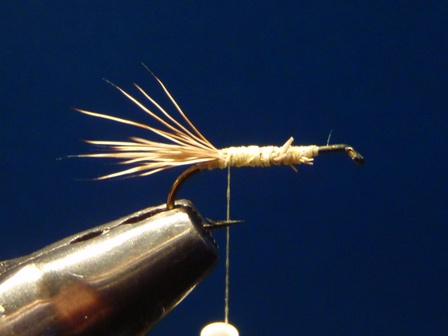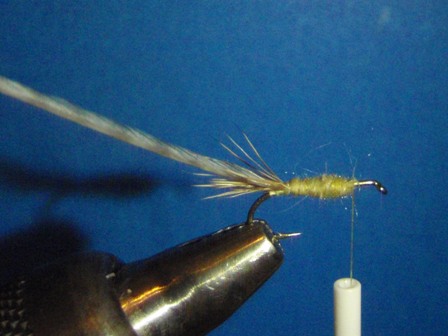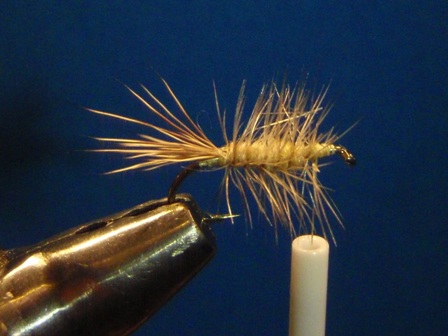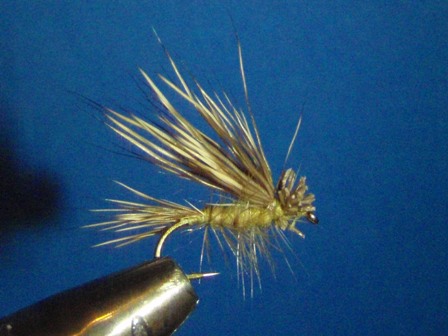Description
This pattern is a variation of an old
standard, the Elk Hair Caddis. It’s quite
simple and can be modified easily in size
and color to suit your needs. I call it the
“shambles” caddis because after a few fish
it looks like a shaggy mess.
Who cares? It just keeps on producing fish.
All you have to do is wash off the fish
slime, squeeze the water out of it, powder
it up, and return it to service. It floats
like a cork and trout won’t leave it alone.
My favorite body color is a creamy yellow,
but I also carry them in olive, tan, and
black.
Tying Instructions
|
|
1.
Crimp the hook barb and cover the hook shank
with a layer of thread.
2.
Tie in a sparse tail of fine deer hair; wrap
the butts of the hair down tightly. I don’t
stack the hair. The tail should be
approximately 2/3 of the shank in length.
|
 |
|
|
|
|
3.
At the same tie-in point, tie in a small
tan or dun rooster neck hackle; the
barbules should be no longer than the
gape of the hook.
4.
Dub a thin body with fine creamy yellow
dubbing. The dubbing should cover the
rear 2/3 of the hook.
|
 |
|
|
|
|
5.
Wrap the hackle forward, using 5 or 6 turns;
tie it off at the front end of the dubbing. |
 |
|
|
|
|
6.
Cut a bunch of deer hair from the hide
and clean out the underfur. The bunch
should be approximately half the
diameter of a pencil. Measure it so that
it will reach the back of the hook bend.
Clip the butts evenly and tie the hair
in firmly just ahead of the abdomen.
Leave a small tuft of the butts (just
like the Elk Hair Caddis). Whip finish
in front of the butts. Turn the fly over
and place a small drop of super glue on
the underside, where the hair wing was
tied in.
|
 |
|
|
|
|
Tying Tips
1.
As mentioned
above, I don’t stack the hair for the tail or the wing. I prefer the slightly
irregular profile of the hair wing, as it seems to look more natural.
2.
Select short,
fine hair for the tail, and longer, slightly coarser hair for the wing. The wing
should flare to some extent, but not too much.
Now go tie one and
then go fish it, and… |
|
|
|
|
 |
|